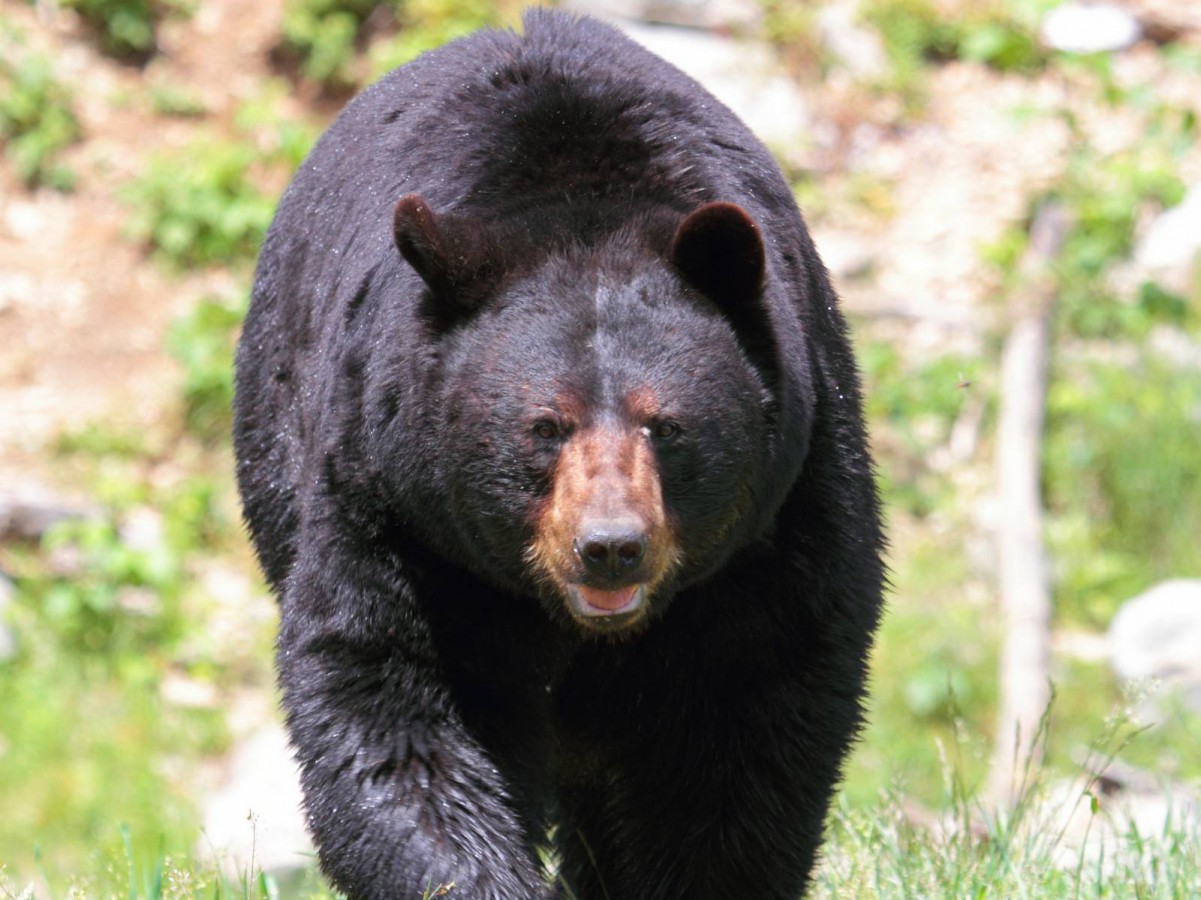All through the spring and summer, black bears (Ursus americanus) have been eating everything they can find, up to 20,000 calories a day in the form of plants and grasses, berries, acorns, insects, honey, and even birdseed and garbage.
When the weather grows cold and the food supply finally dries up, they will retreat to their winter dens. Males bed down around mid-December and emerge in mid-March; females, which give birth during the winter and stay with their cubs for two years, remain in their dens longer, from late November to mid-April.
There is some debate about whether or not bears truly hibernate; some scientists prefer to describe their winter sleep as “lethargy” or “torpor.” The bodies of so-called “true” or “deep” hibernators such as rodents or bats drop to near-ambient temperatures and their metabolic rates plummet to almost nothing within a few hours. Some species, such as the chipmunk, periodically wake up to eat and pass waste; others, like the bat, tough it out the whole winter without any sustenance at all. In comparison, the bear sleeps only lightly. Its body temperature drops slightly and its metabolism slows, but it will wake if it is disturbed or if the weather turns unusually warm. This light sleep is likely a survival mechanism, as bear dens can be in surprisingly exposed locations: scratched into hillsides, in rock crevices or hollow trees, under brush piles or downed trees, or even in open areas of the forest floor. Sleeping bears seem to be able to sense the presence of intruders, and they are able to wake up very quickly in order to defend themselves: midwinter explorers, take care.
Unlike many “true” hibernators, the bear does not eat or drink anything for months on end, and it does not urinate or defecate. If we were to do this, even if we could survive without food, our muscles would atrophy and our bones would become porous and brittle (osteoporotic). Remarkably, although a bear may lose fifteen to thirty percent of its body mass over the course of a long winter, it may actually have more muscle mass at the end of the winter than it did at the beginning, and its bones will retain all of their strength. The bear’s body is able to use the nitrogen in urea, a byproduct of fat metabolism, to synthesize proteins that it then uses to maintain muscle and organ mass. In addition, it recycles its own water all winter, thereby avoiding dehydration and kidney failure. When a bear metabolizes fat during hibernation, its blood cholesterol levels double, but it does not seem to experience the ill effects that a human would suffer from sky-high blood cholesterol levels (atherosclerosis, gallstones). Perhaps the only downside to this perfectly self-contained system is the fact that the bear’s intestines continue to produce feces all winter long and it must seek out plants with laxative effects in the spring.
Bears mate during the summer, but the fertilized embryo does not implant in the female’s uterus until after she has denned, and then only if she has sufficient fat stores. Six to eight weeks later, in midwinter, she gives birth to one to three cubs. No other northern animal gives birth at such a hostile time of year, and few mammalian species have young that are so tiny in comparison with the adults – from whence the old belief that bear cubs are born dead and must be licked into shape and life by their mothers. The mother dozes off and on for the rest of the winter as her cubs feed, grow fat, and wait for spring.


